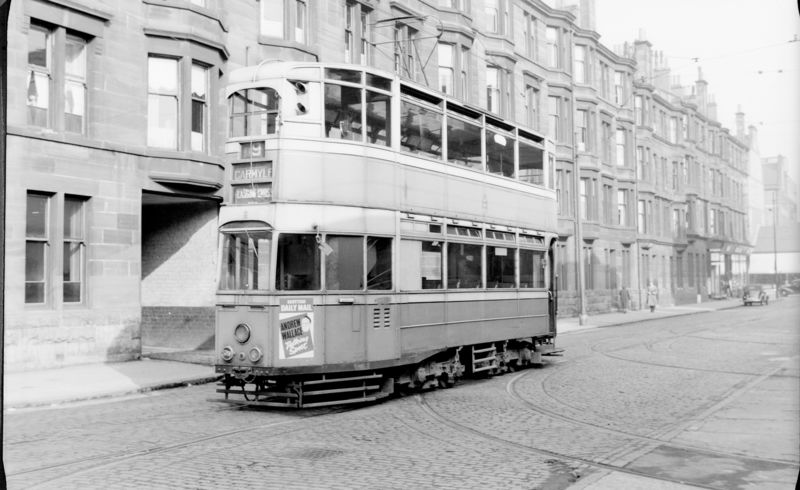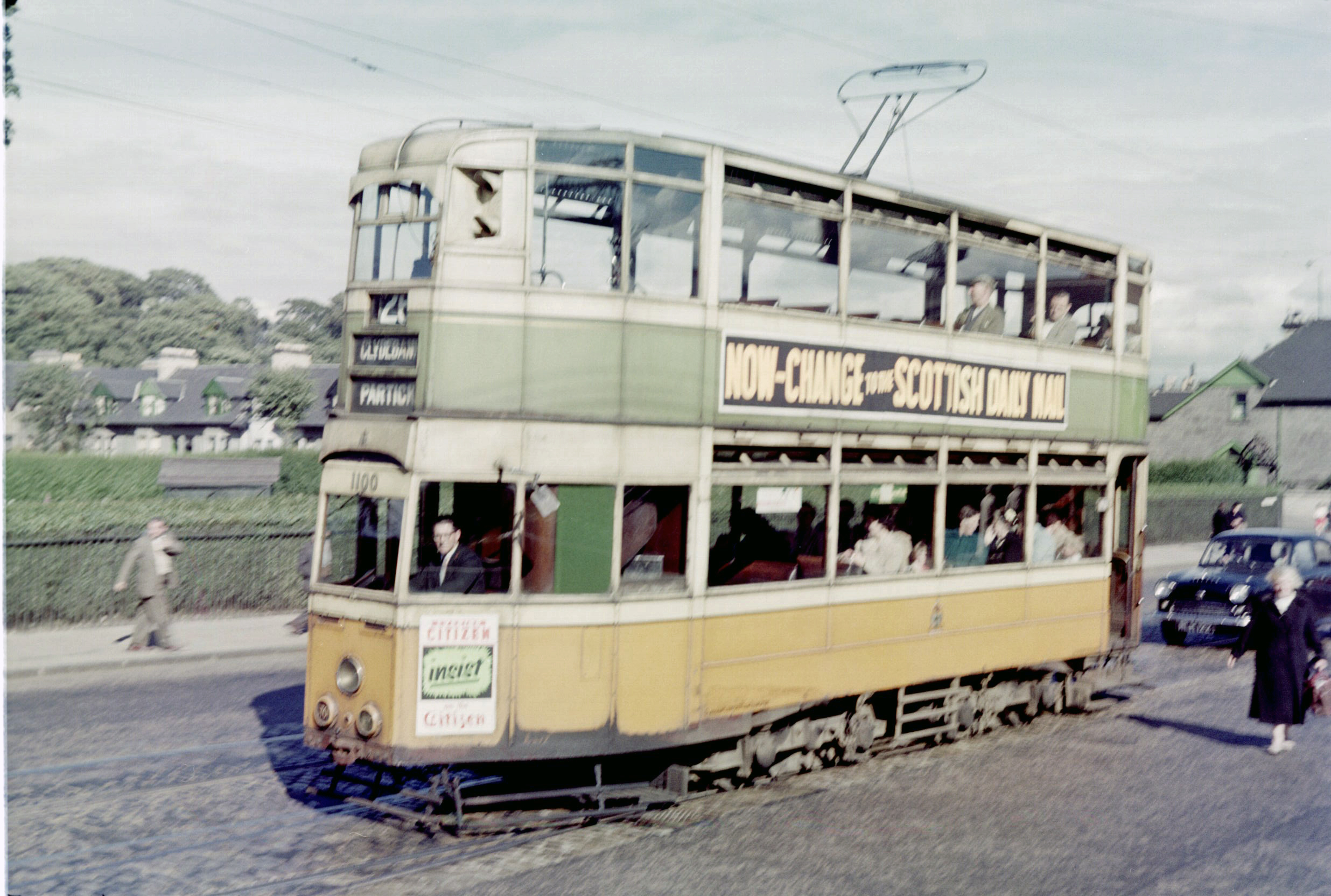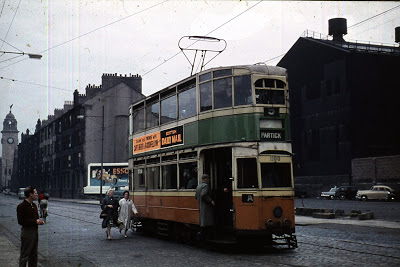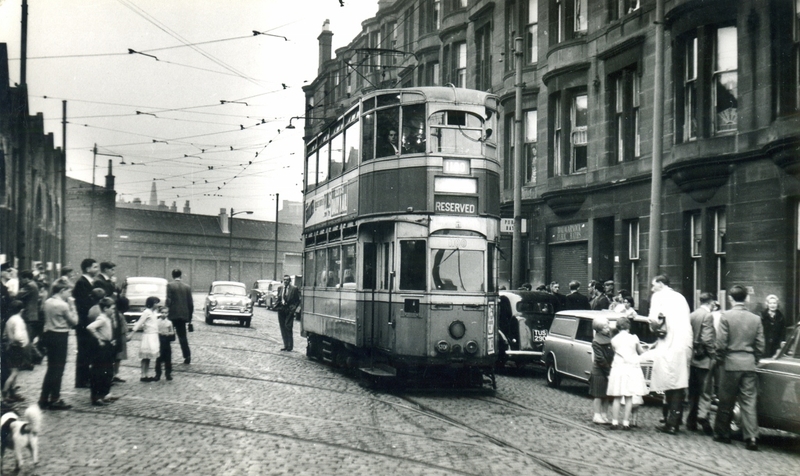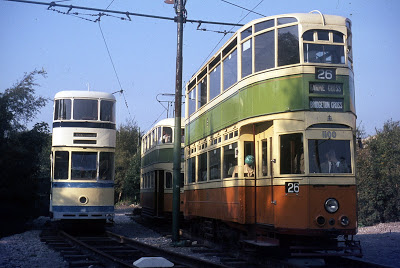Glasgow Corporation Transport No. 1100
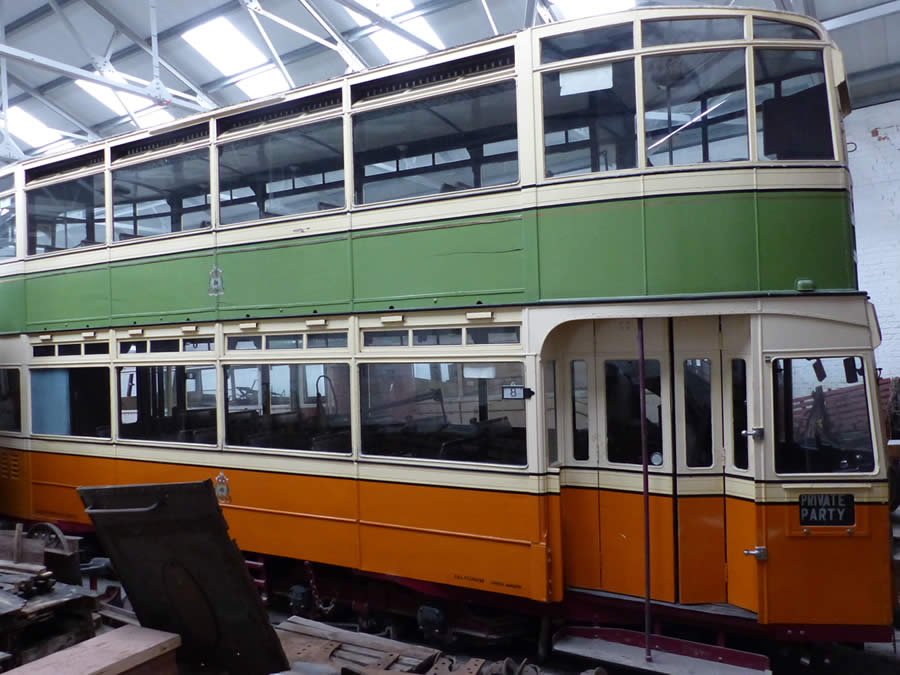
Photo: Jim Dignan
The National Tramway Museum is somewhat unusual in the sense that not only are many of the priceless exhibits regularly pressed into service to show visitors what life was like in the days of the tram, but they owe their survival to the efforts and resourcefulness of the enthusiasts who saved them for preservation and founded the museum in the first place. Only a few trams could be saved and often it was the ‘unique’ or unusual ones that appealed to enthusiasts which passed into preservation.
This posed a problem as the museum began to develop a more rational collections policy in which greater emphasis was placed on more typical ‘mainstream’ tramcars that could illustrate key phases in the tramcar’s evolution and which were therefore more ‘representative’ than the rarities and one-offs beloved by enthusiasts. One tram which illustrates this tension to perfection is Glasgow 1100, which owes its very survival to its ‘novelty value’ and appeal to enthusiasts who were active in the early days of the preservation movement even though it was one of the least typical cars in the Glasgow fleet.
The tram began life as a conventional Glasgow ‘Standard’ double bogie car that was built by the Scottish firm of Hurst Nelson and entered service in November 1928. Just under one year later, however, its original ‘Kilmarnock’ maximum traction bogies were replaced for a time by an equivalent set obtained from J.G. Brill of Philadelphia before reverting to the original type. This was to be just the first of many modifications, though, as the tramcar came increasingly to be used as a ‘mobile test-bed’ for the purpose of trying out various ideas and modifications.
Specification
- Type of tram
- Double deck, all-enclosed bogie electric tramcar
- Livery
- Orange, Green and Cream
- Seating capacity
- 69 total (29 down, 40 up)
- Date built
- 1928
- Manufacturer of body
- Originally Hurst Nelson but rebuilt by Glasgow Corporation
- Manufacturer of truck
- Kilmarnock Engineering Co. Maximum Traction Bogie, modified with individual bogie mounted air cylinders
- Gauge
- Original: 4’ 7¾” Current: 4’ 8½”
- Motor
- MV101DR 2 x 60 hp
- Controller
- BTH remote electro-pneumatic control equipment
- Current collector
- Pantograph (originally Fischer Bow Collector)
- Modification
October 1929 original Kilmarnock maximum traction bogies replaced by JG Brill 61E1’s. A pantograph was fitted around this time.
Rebuilt by Glasgow Corporation Transport in 1940/1 in the course of which its body was partially streamlined and an experimental set of route colour lights was installed.
The tramcar received a new set of BTH electro-pneumatic control gear (its 3rd type of control gear) in 1941.- Withdrawn from service
Not known to have run in regular passenger service beyond 2 November 1961.
- Subsequent history
The tram survived in storage for a time at the city’s Coplawhill works which it finally left in 1964.
Despite being destined for a site in Cheshire the tram ended up at Crich in somewhat mysterious and controversial circumstances.- Restoration history
The tram was restored and repainted in 1965 and ran in regular passenger service until 1976, when it was placed in storage.
- Current status
- Stored in non- operational condition off-site and now in need of further restoration.
- Date started operating at Crich
- 1965 for 11 years
- Total mileage covered at Crich
- 2,068
- Current location
- Off-site storage facility
- 1928 – 1962Fully operational on original tramway
- 1962 – 1964In storage
- 1964 – 1965Undergoing restoration
- 1965 – 1976Operational at Crich
- 1976 – 2005On display
- 2005 –In storage

